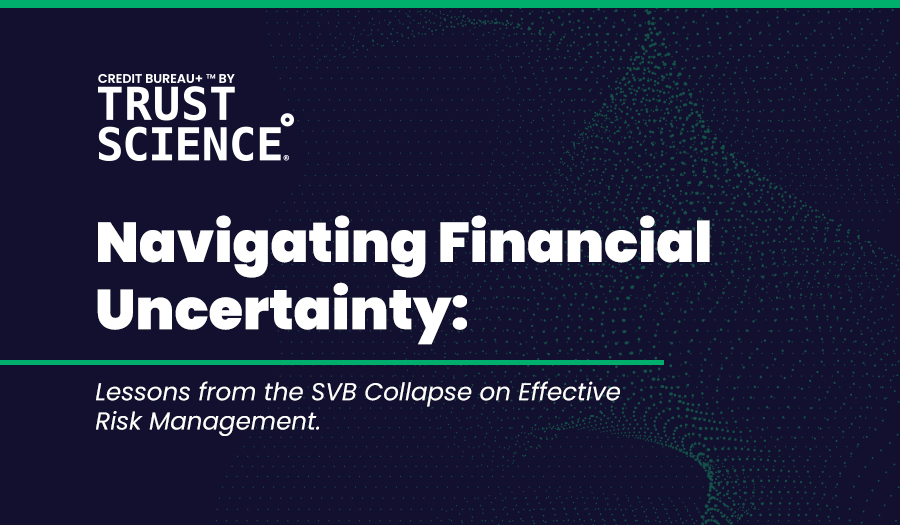Benefits to All Stakeholders
The use of AI/ML technologies can be used to identify creditworthy borrowers who have been traditionally excluded from the credit system due to the lack of credit history (underbanked individuals, credit invisibles). AI/ML can use large amounts of additional alternative data (e.g. current income, employment history, and/or applicant-permissioned data from their mobile phone) to calculate the credit score of borrowers. Such data-driven methods allow wrongly-scored subprime borrowers to get credit, increasing the number and type of people and businesses that banks and other financial institutions can serve in a highly legal & ethical way. The traditional credit scoring system, for instance, labelled 50% of Americans as less-than-ideal borrowers. Worse, approximately 40% of those people are wrongly scored. Inaccurate, or limited, systems reduce the addressable customer base for conventional lenders, and it leads to unnecessarily high interest rates or no credit at all for large segments of the population. The use of AI/ML in credit score calculation, however, leads to superior loan origination, has shown to increase lender’s profits by upwards of 15%, and contribute to a better return on their assets, all while keeping the risk level relatively constant.
Dynamic Scoring
AI/ML technologies are increasingly used in credit scoring to quickly adapt to environmental changes, such as interest rates, average household income, and other measurable factors. This method of dynamic scoring allows lenders to make consistently accurate decisions, regardless of macro-level factors. Conventional credit scoring models are very static, and they do not take into account drastic changes (like the COVID-19 pandemic). But with the use of AI/ML technologies hosted inside a purpose-built infrastructure, scoring models can be retrained extremely rapidly to account for changes in the macro environment and in consumers’ behavior. In this way, volatility & chaos (which are toxic to conventional scorecarding methodologies and even computerized regression-based modeling techniques) can be harnessed & converted into assets: AI/ML helps eliminate the “fog of change” and accurately assesses the creditworthiness of borrowers even in highly volatile market conditions.
AI/ML Can Reduce Risks
Unlike traditional credit scoring systems, AI/ML has the capability to handle and process large quantities of data very quickly. Companies are using AI/ML systems to build both traditional and alternative data models. By leveraging the processing power of these ML-generated models, institutions, such as lenders, can make predictions based on a particular individual or scenario, such as evaluating a first-time borrower application. Coordinating these systems for the purposes of dynamic scoring, however, can be quite difficult without the right platform to operationalize these AI/ML-built models.
Arguably, the greatest risk for any lender is granting a loan to a client who cannot pay it back. The best way to eliminate this risk is by quantifying the risk of every client, or borrower, and identifying not only their creditworthiness but also the loan amounts at which the individual is likely to pay off the principal and its interest. Evaluating the riskiness of a borrower is the key to a successful lending business. With an accurate risk evaluation method, financial institutions can maximize the number of loans given to credit-worthy borrowers, and minimize the number of loans gifted to unreliable ones. AI/ML can leverage massive amounts of data to help create models that are highly informed and highly adaptable. The success of which, however, is limited by the data set you feed it.
AI/ML-built models are products of the data that was used to create them. The parameters and evaluation techniques of which are directly informed by what the AI has learnt. By introducing large alternative datasets, you are essentially providing the AI/ML with a more complete picture of the borrower and their profile. Therefore, by feeding the AI/ML more data, you can increase the amount of information the model has to create holistic, fair, and accurate credit evaluations. With an improved scoring and decision making process, lenders can avoid declining good applicants and avoid approving bad applicants.
Just because one utilizes a large amount of data to inform their AI/ML, doesn’t guarantee, however, that these borrower evaluations will be void of bias. In fact, the inclusion of prohibited factors and limited datasets can skew an otherwise objective process into a biased one.
Compliance
The traditional data used to calculate credit scores can be biased against minority populations or other historically marginalized groups, including single parents or low-income groups. If not handled properly, AI/ML systems can reproduce these biases in their assessment as well. AI/ML algorithms should be properly modelled and fully supervised. Data ethics training should be provided to data scientists to ensure that the data used complies with regulations that ensure fairness (like the Fair Credit Reporting Act) to outright avoid–not merely reduce–the use of prohibited factors.
Identifying said prohibited factors is not always so easy. According to the Effects Test legal doctrine, even if prohibited factors are not used, algorithms and evaluation processes may inherently perpetuate biases based on prohibited factors, which are explicitly non-compliant with the Equal Credit Opportunity Act (ECOA), Regulation B, and other similar regulations. Companies offering these kinds of automated scoring services must take part in and consistently pass regular and voluntary compliance checks, which screen extensively for biased factors and results. Not only will it improve the quality and size of their lending base, it will also avoid them having to incur massive fines from regulators like the Federal Trade Commission (FTC).
Using AI and ML to Power Fair and Equitable Credit Scoring
The credit market is growing rapidly, and the use of AI/ML in credit scoring systems can lead to more efficient and more accurate decisions. The potential of AI/ML is vast, which, if properly harnessed, can lead to a fairer and more inclusive credit lending sector. And if not, it can lead to wide misuse of personal and financial data of customers, reproduce additional biases and further marginalize certain populations.
Therefore, a company offering financial services must focus on its privacy policies, compliance policies and take measures for financial inclusion. The right company will build or buy its AI/ML systems in such a way that they are truly harnessing permitted & permissioned data to improve accuracy and efficiency of their lending.
Removing discriminatory credit scoring policies is not as easy, however, as simply identifying prohibited factors or integrating ML-built models. Legal doctrines like the Effects Test prove that, like humans, internal biases are deeper than surface-level judgement. Traditional systems subconsciously reinforce biases and inequalities that can manifest themselves in skewed credit scoring, which is non-compliant. Achieving compliance means utilizing alternative data and scoring platforms to fairly, accurately, and inclusively assess everyone and thus gain the trust of your customers, stakeholders, and relevant regulators.






